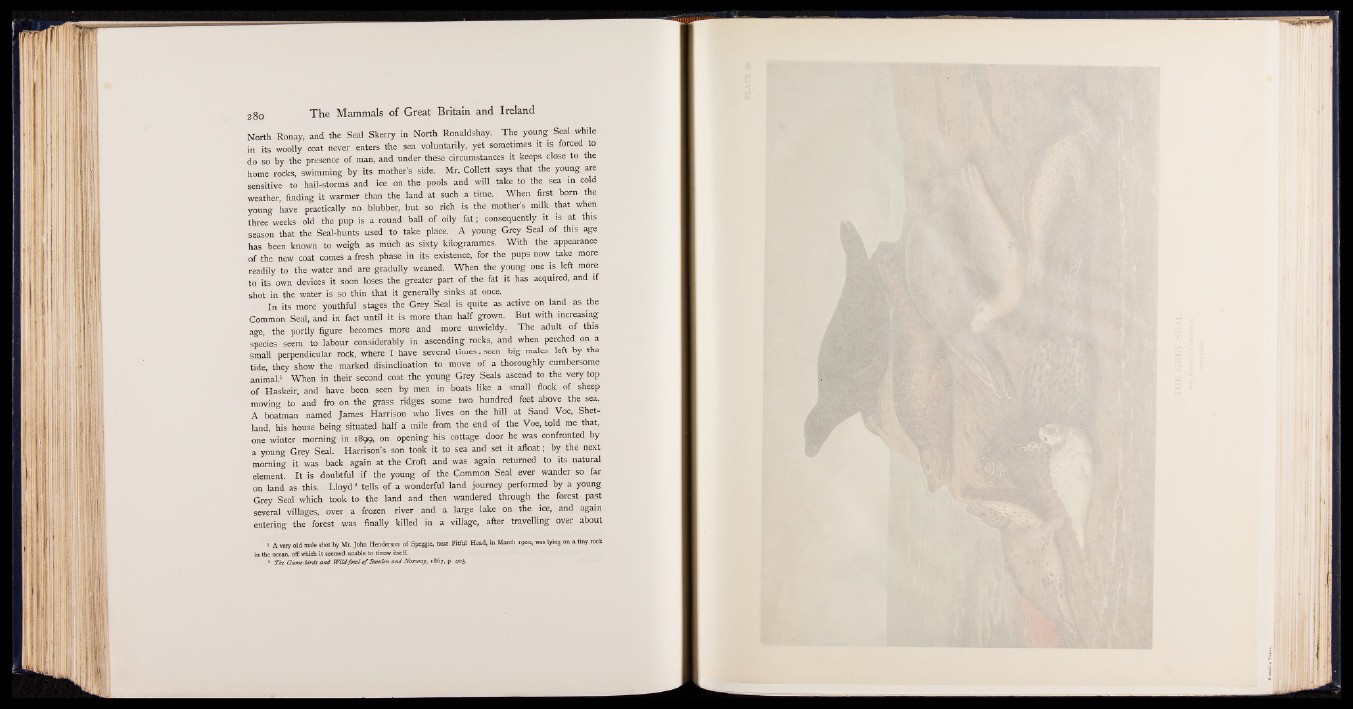
North Ronay, and the Seal Skerry in North Ronaldshay. The young Seal while
in its woolly coat never enters the sea voluntarily, yet sometimes it is forced to
do so by the presence of man, and under these circumstances it keeps close to the
home rocks, swimming by its mother’s side. Mr. Collett says that the young are
sensitive to hail-storms and ice on the pools and will take to the sea in cold
weather finding it warmer than the land at such a time. When first born the
young have practically no blubber, but so rich is the mother's milk that when
three weeks old the pup is a round ball of oily fat; consequently it is at this
season that the Seal-hunts used to take place, A young Grey Seal of this age
has been known to weigh as much as sixty kilogrammes. With the appearance
of the new coat comes a fresh phase in its existence, for the pups now take more
readily to the water and are gradully weaned. When the young one is left more
to its own devices it soon loses the greater part of the fat it has acquired, and if
shot in the water is so thin that it generally sinks at once.
In its more youthful stages the Grey Seal is quite as active on land as the
Common Seal, and in fact until it is more than half grown. But with increasing
age, the portly figure becomes more and more unwieldy. The adult of this
species seem to labour considerably in ascending rocks, and when perched on a
small perpendicular rock, where-1 have several times.seen big males left by the
tide, they show the marked disinclination to move of a thoroughly cumbersome
animal.1 When in their second coat the young Grey Seals ascend to the very top
of Haskeir, and have been seen by men in boats like a small flock of sheep
moving to and fro on the grass ridges some two hundred feet above the sea.
A boatman named James Harrison who lives on the hill at Sand Voe, Shetland,
his house being situated half a mile from the end of the Voe, told me that,
one winter morning in 1899, on opening his cottage door he was confronted by
a young Grey Seal. Harrison's son took it to sea and set it afloat; by the next
morning it was back again at the Croft and was again returned to its natural
element. It is doubtful if the young of the Common Seal ever wander so far
on land as this. Lloyd! tells of a wonderful land journey performed by a young
Grey Seal which took to the land and then wandered through the forest past
several villages, over a frozen river and a large lake on the ice, and again
entering the forest was finally killed in a village, after travelling over about
1 A very old male shot by Mr. John Henderson of Speggie, near Fitful Head, in March 1900, was lying on a tiny rock
in. the ocean, off which it seemed unable to throw itself.
a The Game-birds and Wild-fowl o f Sweden and Norway, 1867, p. 403.